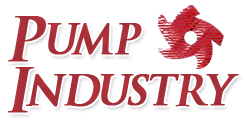From high-abrasion tailings to thickened sludge, these machines are engineered to endure some of the harshest conditions imaginable. But as global industry needs evolve, so does the slurry pump market. Let’s dive deep into how this essential market is shifting, growing, and innovating, all while helping to keep critical sectors flowing – literally.
What Exactly Is a Slurry Pump?
Before we go further, it helps to understand what makes a slurry pump so special. Unlike standard pumps, slurry pumps are built with reinforced components—think hard metal liners, wear-resistant impellers, and rugged casings. These features help them withstand not just corrosion, but the constant battering that comes with moving solid-laden fluids.
There are different types of slurry pumps depending on the application: centrifugal slurry pumps (the most common), submersible, vertical, and horizontal designs. The correct type varies based on factors like particle size, slurry density, flow rate, and the level of abrasiveness.
Slurry Pump Market Outlook 2034
As industries grow and environmental regulations tighten, the demand for slurry pumps is not only steady—it’s growing. The global Slurry pumps market was valued at approximately US$ 1.0 billion in 2023. According to recent market research, the industry is projected to expand at a CAGR of 2.8% from 2024 to 2034, eventually reaching US$ 1.4 billion by the end of 2034.
That’s a significant growth trajectory for a segment that doesn’t always get the spotlight. What’s driving this increase?
Key Growth Drivers
1. Mining & Mineral Processing
Mining continues to be the biggest end-user of slurry pumps globally. From copper and gold to coal and rare earth elements, modern mining operations rely on slurry pumps to move mixtures of minerals and water through complex processing systems. The expansion of mining activities in regions such as South America, Africa, and parts of Asia-Pacific is fueling consistent demand for heavy-duty pumps.
As mines reach deeper levels and become more mechanized, the slurry being handled gets denser and more abrasive, demanding better and more durable pumps.
2. Infrastructure & Wastewater Management
Urban expansion brings with it an increased need for effective wastewater treatment. In this context, slurry pumps are vital for moving sludge and managing effluents in water treatment plants.
Government investments in water infrastructure—particularly in developing countries—are creating a strong demand wave. Furthermore, in developed markets, the need to upgrade aging infrastructure is leading to a spike in slurry pump replacement and retrofit projects.
3. Oil Sands and Energy Sector
Another driver is the energy sector, particularly oil sands in Canada and other locations. Here, slurry pumps are used extensively in the extraction process to transport the sand, clay, water, and bitumen mixture. As energy companies explore tougher terrains and more complex reserves, pump requirements also increase in complexity and scale.
Challenges Holding the Market Back
Despite its growth, the slurry pump market isn’t without hurdles. High energy consumption remains a key concern. Slurry pumps, especially when moving highly abrasive or viscous material, tend to consume a lot of power, leading to higher operational costs.
Additionally, maintenance costs can be significant. These machines operate under intense conditions and require regular inspection, parts replacement, and even full system overhauls in some cases. Smaller facilities often find these costs burdensome.
Lastly, the lack of standardization in slurry compositions across different industries adds another layer of complexity. A pump that performs well in a gold mine may not work as efficiently in a paper mill dealing with fibrous slurry.
Regional Snapshot
Asia-Pacific
With its booming mining sector, expanding infrastructure, and industrial growth, Asia-Pacific leads the slurry pump market. China and India are the front-runners, not only due to their massive internal demand but also as manufacturing hubs for pump components.
North America
North America maintains a mature yet active market, driven by wastewater treatment upgrades and oil sands development. Technological innovation and demand for energy-efficient solutions are particularly strong here.
Europe
Europe is seeing steady growth, particularly in environmental and municipal applications. Stricter EU regulations related to waste and water management are pushing for more efficient slurry handling systems.
Middle East & Africa
Emerging mining activities, coupled with increasing infrastructure projects, are putting MEA on the slurry pump market’s growth radar. However, supply chain issues and limited technical expertise in some regions remain challenges.
Trends Shaping the Future
Smart Pumping Solutions
Digitalization is creeping into even the grimiest industrial corners. Smart slurry pumps equipped with IoT sensors and predictive analytics are becoming more common. These pumps can alert operators to wear and tear, performance drops, and even predict failures before they happen.
While still in early adoption stages, the trend toward smart, connected pumps is expected to gain significant momentum through the next decade.
Sustainability & Efficiency
As ESG (Environmental, Social, and Governance) considerations become critical across sectors, manufacturers are being pressed to design slurry pumps that are more energy-efficient and made from sustainable or recyclable materials. Technologies that reduce water usage in slurry transport are also under development.
Customization Over Standardization
A shift is occurring from “one-size-fits-all” to customized pumping systems. Customers are demanding designs tailored to their specific slurry types and operational conditions. Manufacturers able to deliver that flexibility stand to gain a significant competitive edge.
Competitive Landscape
The slurry pump market features a mix of global giants and regional specialists. Key players include:
- Weir Group PLC
- KSB SE & Co. KGaA
- Metso Corporation
- Ebara Corporation
- Xylem Inc.
These companies are heavily investing in R&D to offer better efficiency, higher wear resistance, and IoT-enabled features. Simultaneously, smaller players are thriving by catering to niche applications and offering tailored services.
Final Thoughts
Slurry pumps may not make headlines, but without them, some of the world’s most essential industries would grind to a halt. Whether it’s extracting raw materials, treating waste, or powering mega infrastructure projects, slurry pumps keep the gears of progress turning.
Looking ahead to 2034, the slurry pump market is poised for solid growth—not just in terms of revenue but also in terms of innovation, environmental responsibility, and customization. As industry stakeholders adapt to stricter regulations, digital transformation, and rising performance demands, slurry pumps will continue to play a central role in the global industrial landscape.
These insights are based on a report on the by Slurry pumps market Transparency Market Research (TMR).
Source: Transparency Market Research, Inc.



